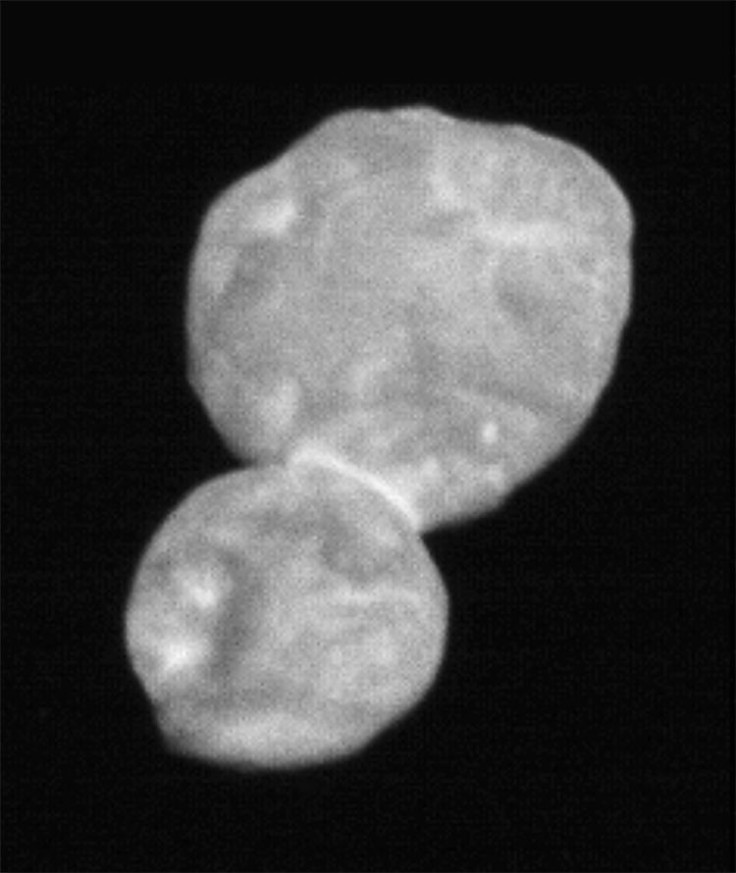NASA's New Horizons Captures Most Detailed Photo Of 'Space Snowman' Ultima Thule Yet

NASA's New Horizons has sent back the best image of Kuiper Belt object (KBO) 2014 MU69, more popularly known as Ultima Thule, which it flew past on New Year's Day.
Taken during New Horizons' historic flyby of the object on Jan. 1, this new image of Ultima Thule provides the most detailed view of the most primitive object ever explored by a spacecraft so far. The ancient, icy object, located in a region beyond Neptune called the Kuiper Belt, is also the first small KBO ever explored by mankind.
Taken just 6,700 kilometers from the object, the image of Ultima Thule showed that it resembled a snowman, with one lobe lightly fused with a much larger one. The image was captured by New Horizons' wide-angle Multicolor Visible Imaging Camera (MVIC), according to the Johns Hopkins University Applied Physics Laboratory website. There is apparently another version of this taken at even higher resolution by the probe's Long Range Reconnaissance Imager (LORRI). However, this photo has not yet been downlinked from New Horizons.
For now, the latest image has revealed a few details about the Ultima Thule's topography. It shows the defined outline of a number of pits, especially along the day/night boundary or terminator, that measure up to 0.4 miles (0.7 kilometers) in diameter. It has not yet been deterrmined if the pits are actually impact craters or the result of other processes, like the ancient venting of volatile materials.
Based on the image, both spheres of the Ultima Thule also had many light and dark patterns of unknown origin. Scientists, however, speculated that they provide information about the KBO formed during the birth of the solar system 4.5 billion years ago. Among the most notable is the bright "collar" between the two lobes of the Ultima Thule.
"This new image is starting to reveal differences in the geologic character of the two lobes of Ultima Thule, and is presenting us with new mysteries as well," said principal investigator Alan Stern of the Southwest Research Institute in Boulder, Colorado. "Over the next month there will be better color and better resolution images that we hope will help unravel the many mysteries of Ultima Thule."
Images and data from New Horizons are taking a while to get back to Earth, partly due to the distance between the spacecraft and the planet which is 6.5 billion kilometers. The probe is currently zooming away from the Sun and Ultima Thule at over 31,500 miles (50,700 kilometers) per hour, so the distance is gradually becoming greater. For now, the radio signal from the spacecraft takes about six hours and nine minutes to reach Earth once it leaves New Horizons.
The transmission is also hampered by the small power output of the New Horizons' transmitter and the size and availability of the receiving antennas here. The data from the probe is expected to gradually arrive over the next 20 months.
© Copyright IBTimes 2024. All rights reserved.




















